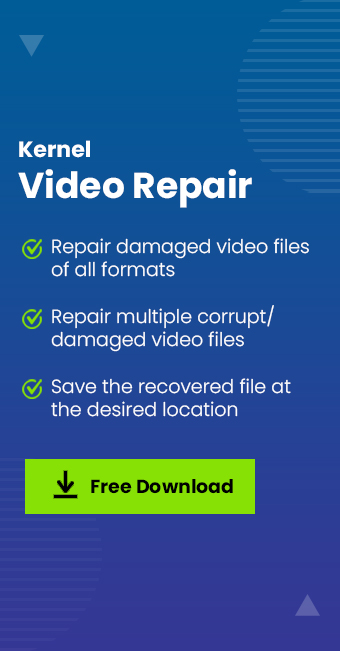Read time 6 minutes
When an H.264 MOV video file gets corrupt, it becomes hard to repair it and access its data. But, most users don’t know that there are different approaches to repair H.264 MOV files. If these manual solutions don’t work, then we can use a video repair software that is capable of fixing all the errors.
In this blog, we will discuss H.264 MOV video files, the reason for their corruption, and how to repair H.264 MOV files.
Highlights
- What is H.264 MOV file?
- Causes of H.264 Corruption
- Common solutions to access H.264 MOV files
- Repairing corrupt H.264 MOV video files
What is H.264 MOV?
H.264 is not a video format; it is actually a video codec that is used in MOV video files. What makes H.264 a unique video codec is its ability to provide high-quality videos at a lower bit rate. For example, with the MPEG-2 format, a DVD can store 2-hour video, whereas, with H.264 MOV format, it can store 4-hour video of the same quality. And that’s the reason it is used for a wide variety of devices, such as DSLRs, drones, Digital Camera, etc.
Causes of H.264 Corruption
First of all, there is no such file format that never gets corrupt. Every file format sometimes gets damaged or inaccessible, and the same applies to H.264 MOV. There could be various reasons behind H.264 corruption, such as virus infection, interruption while downloading, etc. Some of the common reasons behind its corruption are:
- Recording videos when the battery is very low
- Storing video files on corrupt storage sections
- When the system turns off accidentally while transferring video files
- Using the memory card that contains H.264 MOV videos from multiple cameras
- Compressing a large video into smaller size
- The header of the video file is broken
Whatever be the reason behind your H.264 MOV corruption, you’ll start getting corruption symptoms while playing H.264 MOV, such as audio will stop syncing with video, the sound might be missing, pixels of the video might start pixelating or show huge random pixels, etc. Therefore, when you start seeing these errors in your videos, it’s time to repair them.
Common Solutions to Access H.264 MOV Video Files
Accessing corrupt H.264 MOV video files is not easy, but you can try several methods that might be helpful in accessing them. Here we have mentioned the tried and useful methods:
- Play video in another media player
- Try to change the video format
- Reduce the screen resolution
- Download the supporting codec for MOV
Switching from one video player to another can help play H.264 MOV files. Sometimes, it’s the video player that doesn’t support the video format. For example, MX Player doesn’t support AC3 codec video files, but it works with VLC media player. So, think of switching to VLC Media Player, 5KPlayer, QuickTime, Rocket Player, etc.
Another solution to access H.264 MOV video files is to change the video format, you can use the Convert/Save feature of VLC Media Player to convert H.264 MOV videos to MP4 or AVI formats.
Reducing screen resolution will help you understand whether there is a problem with the graphics driver of your system or the video files.
It’s necessary to have the required codec installed on your system to play the video files. So, if the required codecs are not installed on your system, then try installing the codec online or use Windows Media player to download codec automatically.
These solutions can be helpful only if the H.264 MOV video file is not highly corrupt. However, if the video files are showing a black screen, sound issues, or any such errors, then you’ll have to repair it.
Repairing Corrupt H.264 MOV Video File Formats
When it comes to repairing H.264 MOV video files, there aren’t many options available. However, using VLC Media Player, some files can be fixed to some extent as it comes with in-built file repairing features. Here’s how you can repair your H.264 MOV file with VLC Media Player.
- Install VLC Media Player in your system and open the corrupt H.264 MOV video file with it.
- Click the Tools tab in the menu bar, and then select Preference.
- Select Input & Codecs from the top menu
- Now, scroll down to Damaged or Incomplete AVI file section and select Always fix from the drop-down menu.
- Click Save.
If the H.264 MOV video file is merely corrupt, then VLC Media Player might resolve the corruption error. However, if it is still inaccessible, then you need to use a third-party utility that is capable of repairing every video file.
Use Professional Video Repair Tool
The software is designed with advanced algorithms to help users repair their corrupt, damaged, and broken video files. It is integrated with extensive features that make it a unique choice for video repairing and fixing common video errors. To repair your H.260 MOV video files with Kernel Video Repair, follow the below steps:
- Download, install, and run the software. Then click the Plus button.
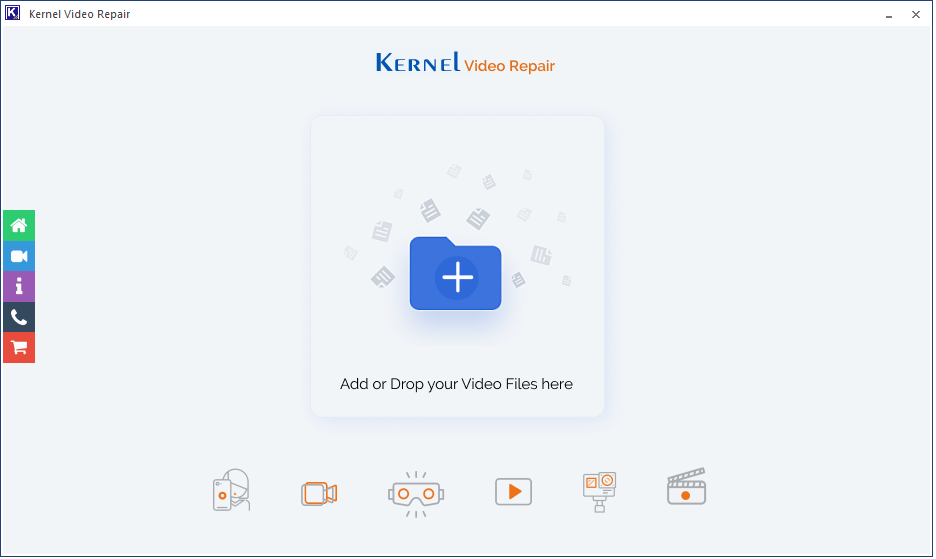
- Select your videos and click Open.
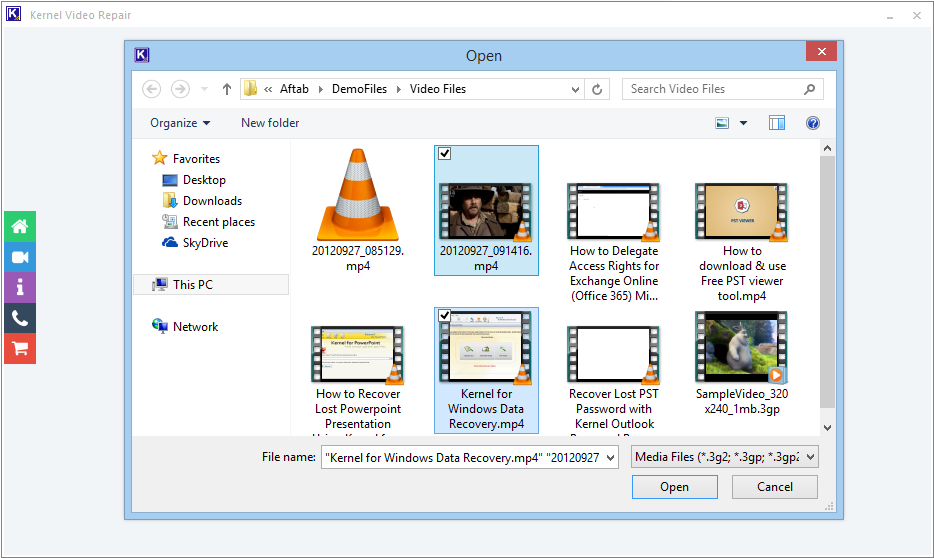
- Click Repair Files button.
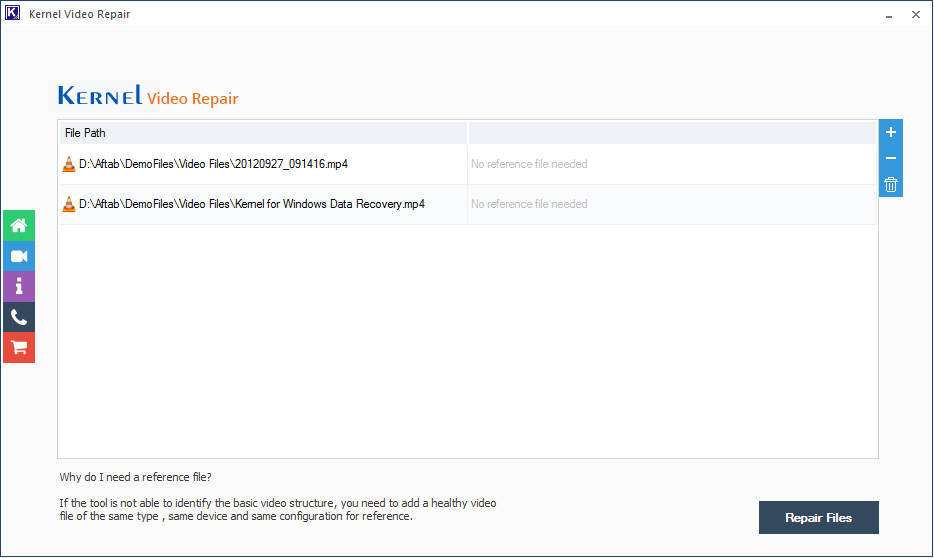
- Provide a safe location for the recovered videos. Click OK.
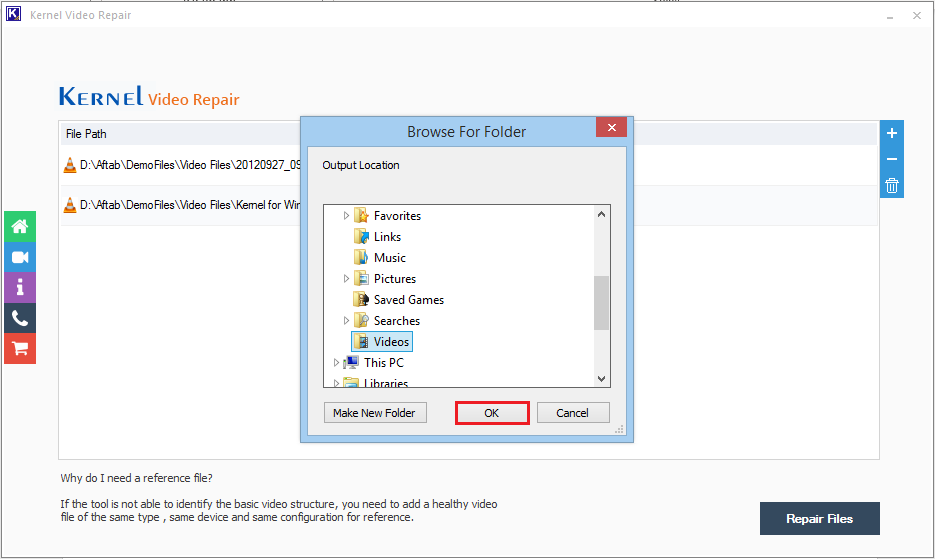
- The videos are successfully recovered. Click Close or save the report in the CSV file.
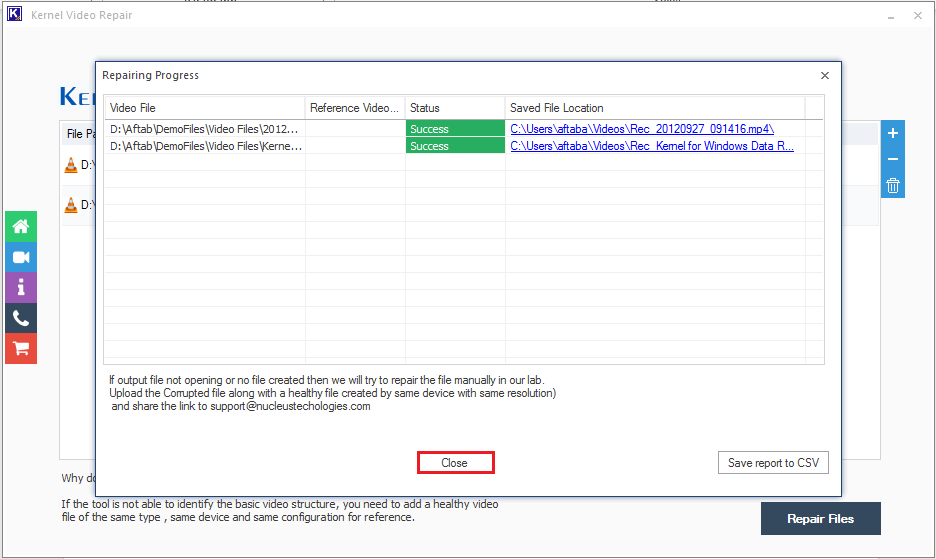
Note: You can use the Drag-&-Drop option to enlist the videos.
Your H.264 MOV video file has been repaired successfully; you can now access it with any media player.
Conclusion
In this article, we talk about repairing corrupt H.260 MOV files. Having corrupt video files on your system can be a headache, especially when you have important information in it. Though manual solutions can repair it to some extent, if it is highly corrupt, then you need to consider a third-party software.


